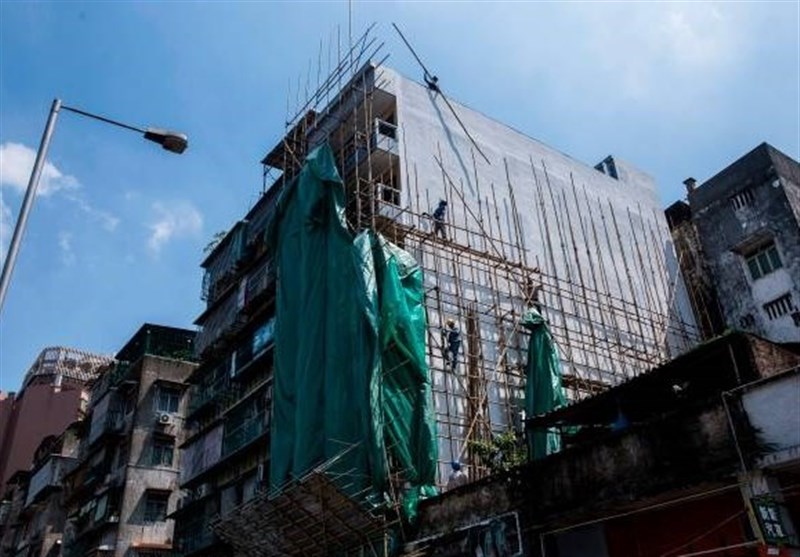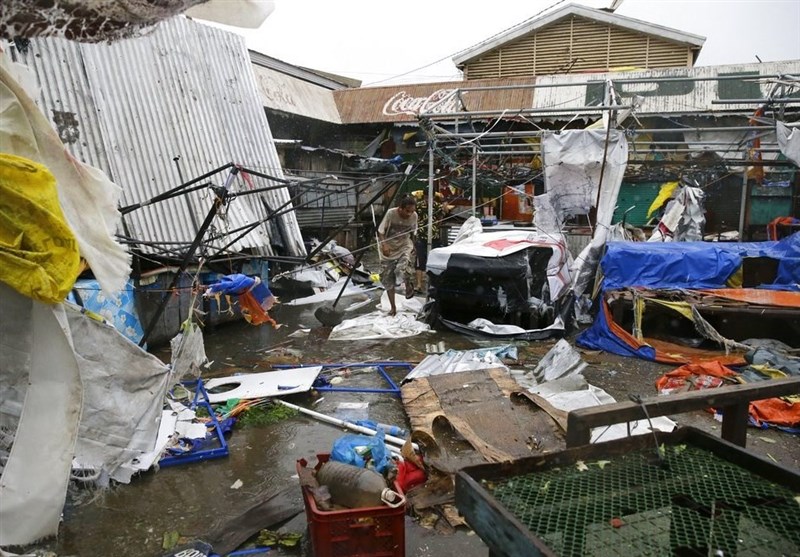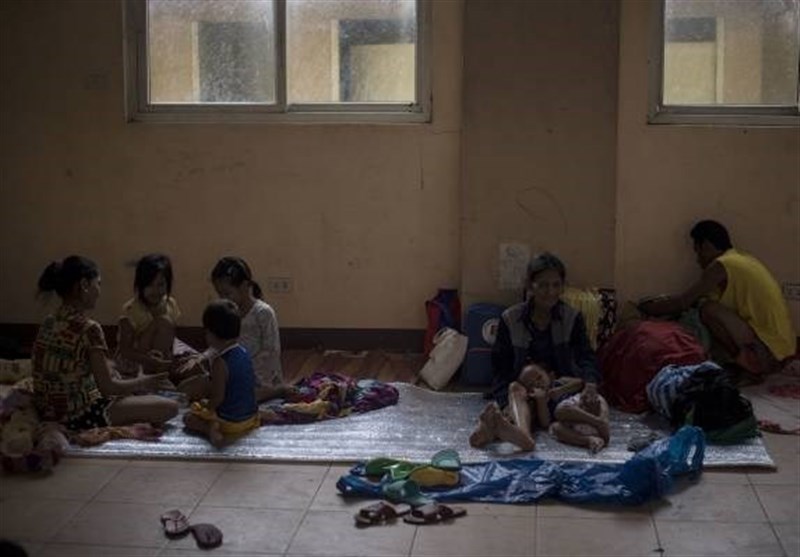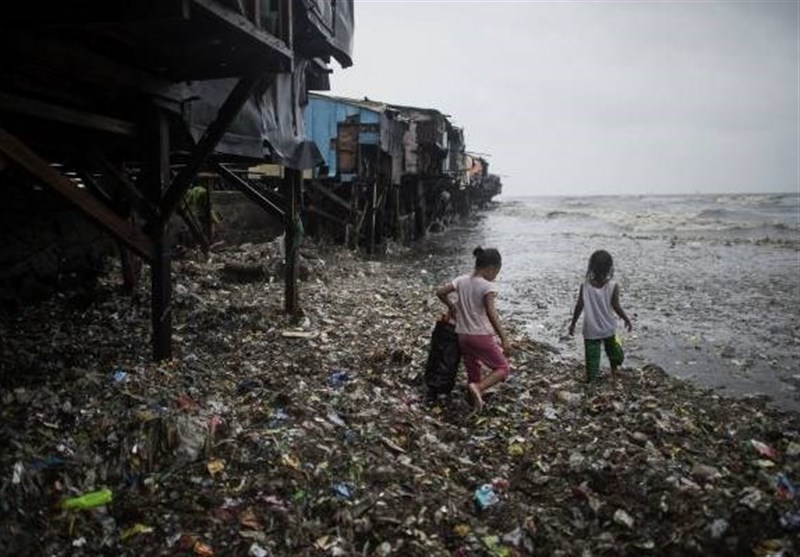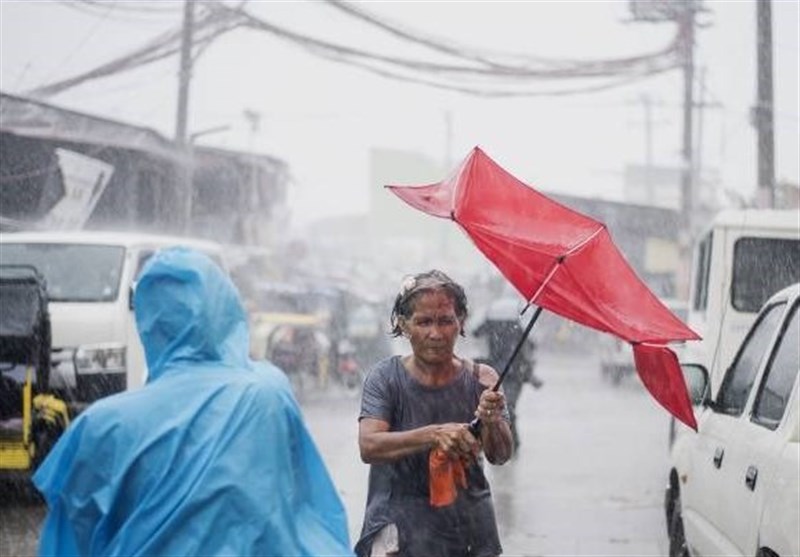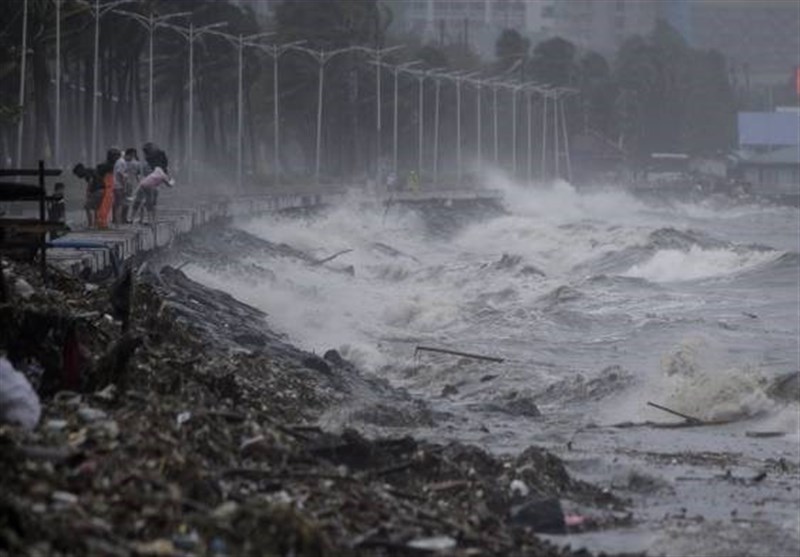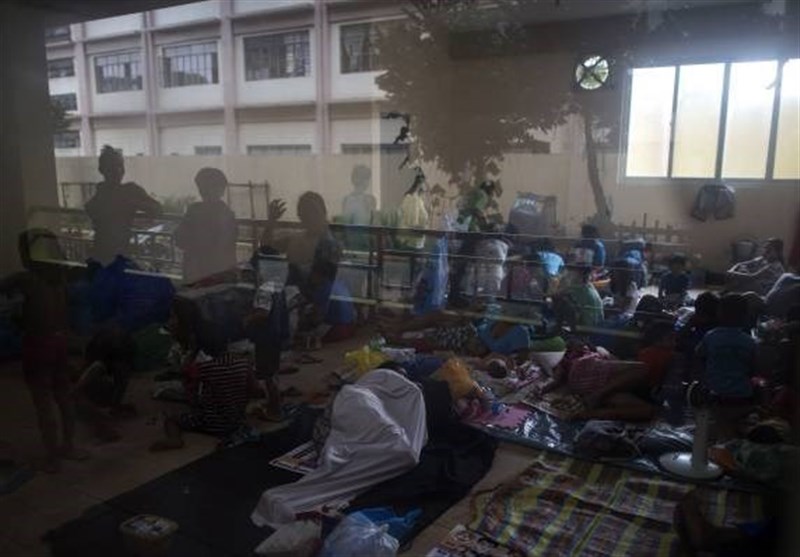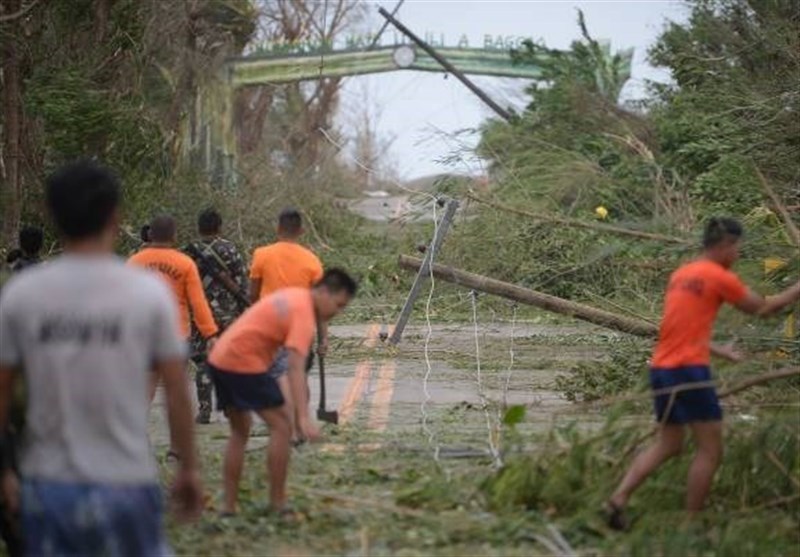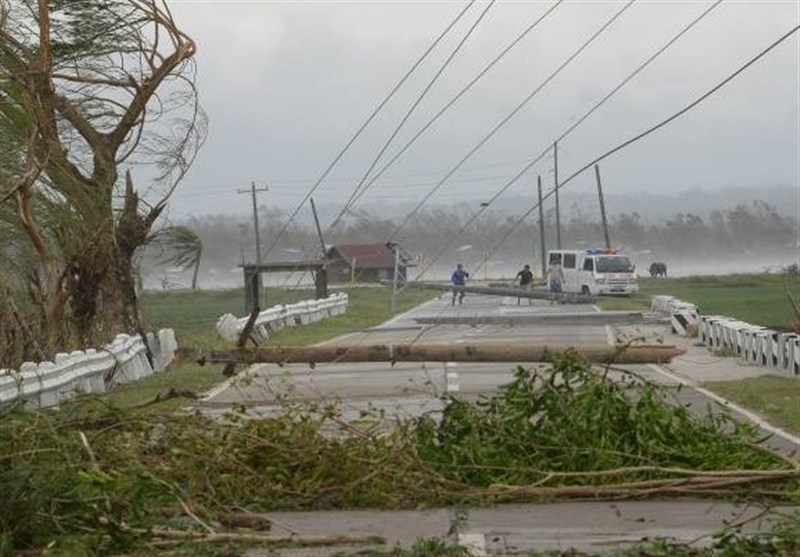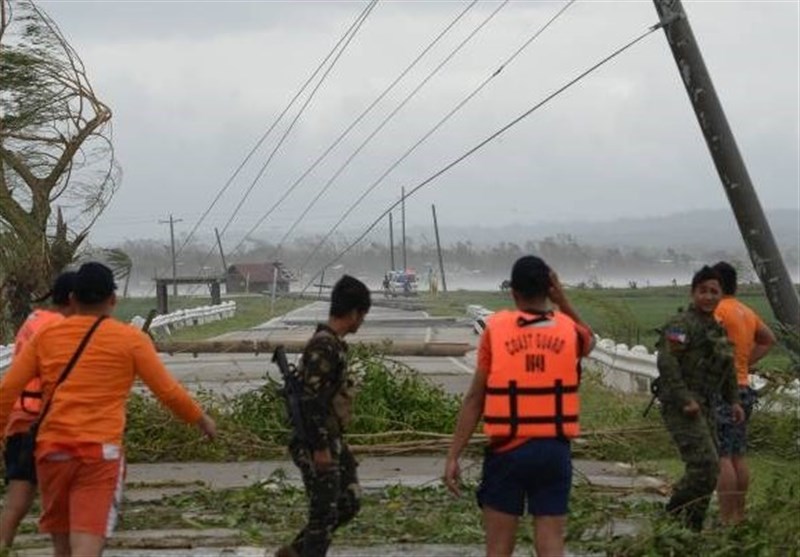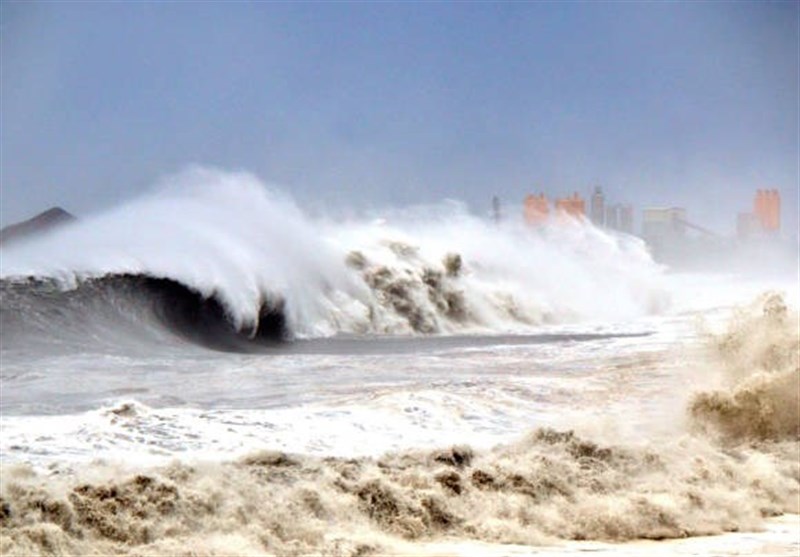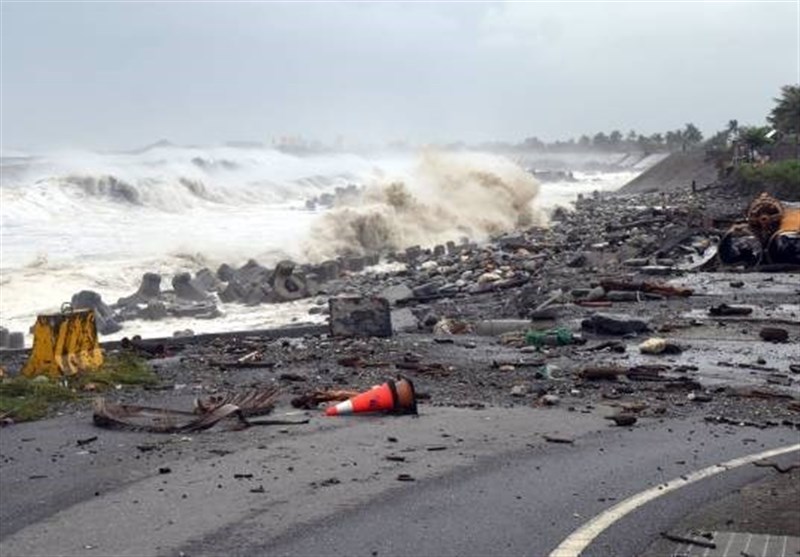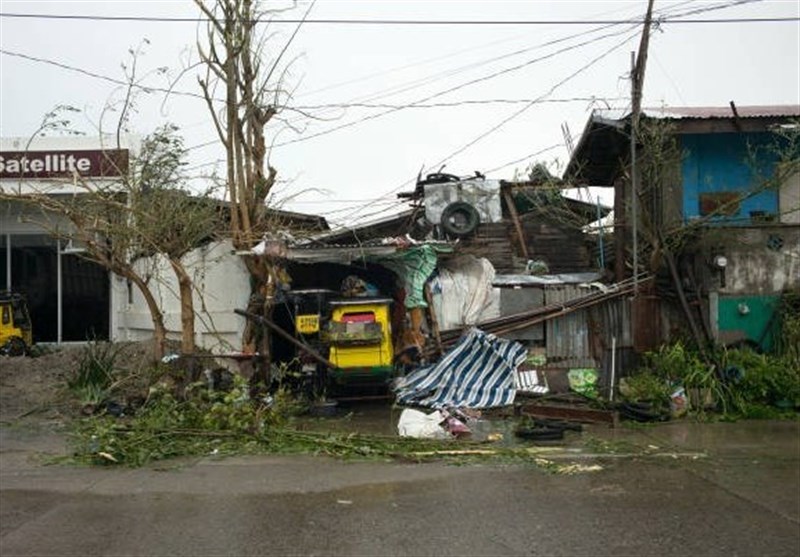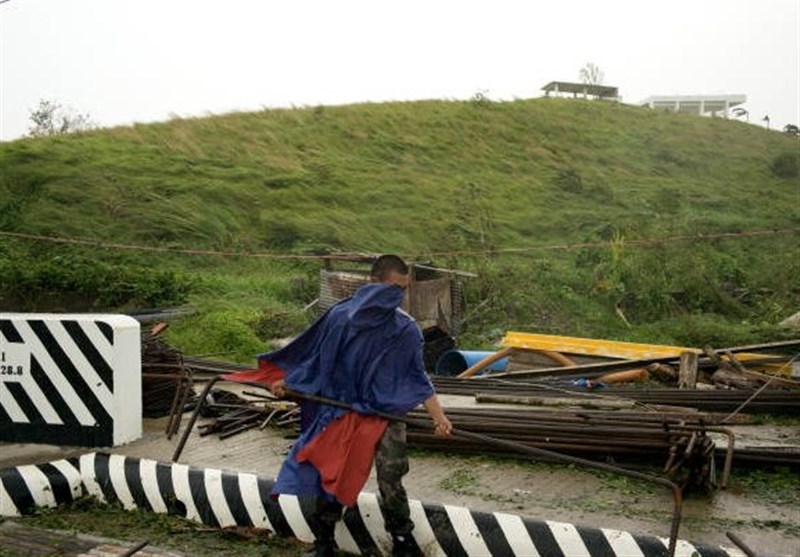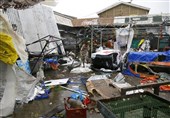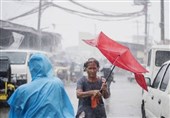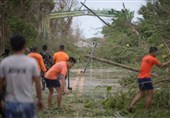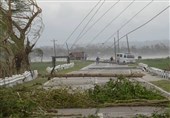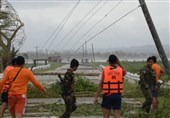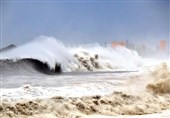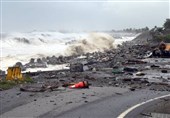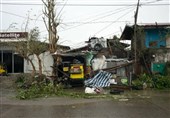Philippines’ Super Typhoon Mangkhut Claims Its First Victims
TEHRAN (Tasnim) - Ferocious gale-force winds of the Super Typhoon Mangkhut, known locally as Ompong, which slammed into the Philippines in the early hours of Saturday took lives of at least two people.
Both victims were women, killed when a rain-drenched hillside collapsed on them, according to the French news agency AFP.
Mangkhut is the strongest storm anywhere on the planet in 2018 so far, carrying gusts of up to 325 kilometers per hour (200 mph) before it made landfall in Cagayan province, on the northern tip of Luzon, at about 1:40 a.m. local time, CNN reported.
When it crossed land, Mangkhut was packing winds of up to 270 kph (165 mph), 120 kph (75 mph) stronger than Hurricane Florence that hit North Carolina in the US, and aid agencies warn millions are at risk from rising flood waters and landslides.
Although the death toll is likely to increase, there was some relief in the Philippines that the damage was not as bad as it could have been.
"Honestly, we were expecting the worst from this," Edgar Posadas, a spokesperson for the National Disaster Risk and Reduction Management Council (NDRRMC) told CNN.
"I was praying and hoping and worried about having so much casualties. But I think after Yolanda, after Haiyan [the international name for Yolanda], there were a lot of lessons that were learned in terms of preparedness, early warnings, preemptive evacuations... and this went a long way."
More than 6,000 people died when Super Typhoon Yolanda hit the Philippines five years ago, the worst in a generation. The storm displaced nearly four million people. Many of the survivors ran short of food, water and medicine almost immediately.
But as Typhoon Mangkhut passes over the south-eastern nation, there are still fears more could have died.
Ricardo Jalad, executive director of the Philippines National Disaster Risk Reduction and Management Council, told CNN that the casualties were rescue workers and that there had been 51 landslides across the region as a result of the storm which is now pounding the Philippines with heavy rain.
Mangkhut's eye is now over water in the South China Sea and making its way toward Hong Kong and southern China.
The latest information from the Joint Typhoon Warning Center has Mangkhut with sustained winds of 195 kph with gusts near 240 kph.
The forecast track has the storm expected to pass around 150 km (95 miles) south of Hong Kong as it moves to the northwest with typhoon-force winds.
Heavy rain and winds are expected in Hong Kong during the morning hours, picking up in intensity through early afternoon and not tapering off until early Monday morning.
Typhoon Mangkhut will make another landfall on Sunday night in the Chinese province of Guandong near the cities of Yangjiang and Zhanjiang.
From there the system will continue to move westward and will rain itself out over northern Vietnam, which could lead to some flooding there early next week.
Meanwhile, the death toll is expected to rise in the Philippines as Mangkhut leaves a wake of destruction and landslides.
The Philippines military is sending two C-130 airplanes and 10 helicopters to Cagayan province for typhoon relief and rescue efforts, Defense Secretary Delfin Lorenzana said Saturday, according to Philippine News Agency (PNA).
They'll fly from metro Manila once the weather improves, Lorenzana said, carrying aid and allowing rescuers to access remote areas of the mountainous north.
Earlier, in the provincial capital Tuguegarao, strong winds lashed buildings, pulling off entire roofs and throwing large chunks of debris into the air.
An estimated 5.2 million people in the Philippines were within 125 kilometers (77 miles) of the projected path of the Super Typhoon, according to the National Disaster Risk Reduction and Management Council.
The scale of the typhoon could be felt in the Philippines capital Manila, more than 340 km (200 miles) from the eye of the storm, where heavy overnight rains have led to widespread flooding in urban areas.
Potential storm surges
Mangkhut is the strongest storm to make landfall in the Philippines since Super Typhoon Haiyan in 2013, which left more than 6,000 people dead, though Haiyan hit a more populated part of the country.
It's also the strongest to make landfall on the Philippines' northern island of Luzon since Super Typhoon Megi in 2010. Northern Luzon was also devastated in 2016 by Super Typhoon Haima, with 14,000 houses destroyed and 50,000 homes damaged, according to CNN Philippines.
Before the storm's arrival Friday, parts of Luzon were placed under Tropical Cyclone Warning Signal No. 4 by the Philippine Atmospheric, Geophysical and Astronomical Services Administration (PAGASA), meaning those areas could expect winds of up to 185 kilometers per hour (114 mph) that could uproot trees, destroy crops, take out electricity and damage buildings. The agency had warned of storm surges up to 19 feet along the Cagayan and Isabela province coastlines.
At 11:00 a.m. local time, authorities warned of potential storm surges up to six meters high in Ilocos Norte, as Mangkhut moved further off the coast.
Once it passes over the Philippines, Mangkhut will continue west through the Luzon Strait into the South China Sea towards Hong Kong.
As of 1 p.m. local time, the Hong Kong Observatory estimated the typhoon had maximum sustained winds of up to 195 kph (120 mph), equivalent to a Category 3 hurricane. It was 730 kilometers (450 miles) southeast of the city and moving at 30 kph (18.6 mph) towards the coast of western Guangdong.
Mangkhut could be one of the strongest storms to have an impact on Hong Kong in more than six decades. The typhoon will make its closest pass to Hong Kong during the day on Sunday, likely during the afternoon.
Officials in Hong Kong held emergency meetings Friday, and residents in low-lying areas and outlying islands have been urged to move to temporary shelters.
Macau's Meteorological and Geophysical Bureau warned that Manghkut would "pose a serious threat" to the Pearl River Delta, where the city is located.
Last year, 10 people died in Macau as a result of Typhoon Hato, the strongest storm to hit the city in more than five decades. It caused widespread flooding and damage to property.
Typhoon Mangkhut will make another landfall on Sunday night in western Guangdong, China.
